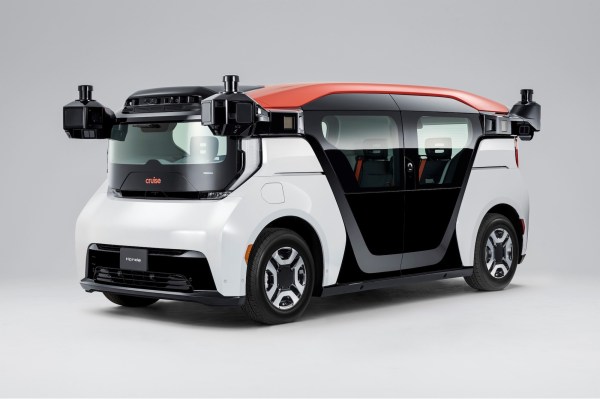General Motors, self-driving car subsidiary Cruise and Honda plan to launch a robotaxi service in Japan under a new joint venture, the three companies announced today.
The companies intend to launch the service with the custom-built Cruise Origin vehicles in central Tokyo in early 2026. The service will start with dozens of Cruise Origins. The fleet will eventually expand to 500 Cruise Origin vehicles, the companies said, adding that the plan is to scale the service area beyond central Tokyo.
Executives from the three companies, including GM CEO Mary Barra, Cruise CEO Kyle Vogt and Honda Global CEO Toshihiro Mibe made the announcement during a press event ahead of the Japan Mobility Show 2023 in Tokyo. Barra appeared virtually while the others attended in person.
“We see a huge opportunity in Japan, as it has the potential to be one of the largest AV markets in the world given the current high demand for taxis,” Barra said. “The region also has a growing need for new forms of transportation, with driver shortages and an increasing need for accessible forms of transportation.
The joint venture between GM, Cruise and Honda is an extension of a well-established partnership. Honda and GM have collaborated since 2013 when the companies started working on hydrogen fuel cell systems. The Cruise Origin, the product of a multi-year collaboration with parent company GM and investor Honda, was unveiled in January 2020. Two years later, GM and Honda announced plans to co-develop affordable electric vehicles that will launch in North America in 2027.
“Our three companies developed the Origin together because we know it takes strong, dedicated companies with unique skillsets and a clear vision partnering on one common goal,” Barra noted.
The announcement to bring the Cruise Origin to Japan comes in a year of rapid growth and milestones as well as a number of incidents in San Francisco that have mounted opposition against the self-driving car company. In the past year, Cruise went from limited operations in San Francisco to receiving the last necessary permit to expand to 24-hour-7-days a week service throughout the city as well as launching robotaxi services in certain areas of Austin, Houston and Phoenix. The company has also started testing its AVs in numerous other cities, including Dallas, Nashville and Los Angeles.
Earlier this week, the National Highway Traffic Safety Administration opened an investigation into Cruise’s autonomous vehicle system following several incidents involving pedestrians in San Francisco. The most recent incident, which occurred October 2, left a woman stuck underneath a Cruise robotaxi after being hit by a human-driven vehicle. The San Francisco Police Department is also investigating that event.
NHTSA opened the preliminary probe after receiving reports of incidents of Cruise vehicles that “may not have exercised appropriate caution around pedestrians in the roadway,” according to a filing on the agency’s website.
